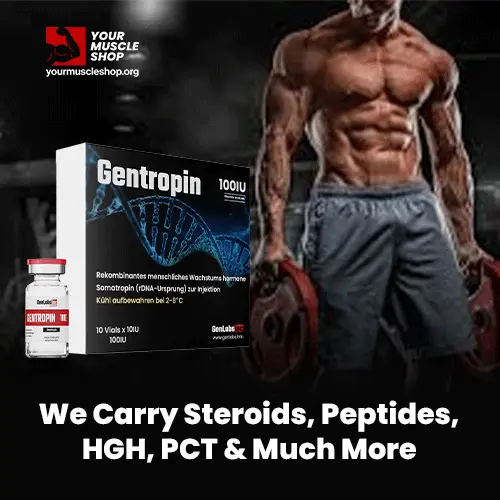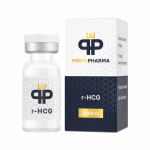Enoch
Member
When it comes to preserving hormonal balance and testicular function during or after a cycle, recombinant human chorionic gonadotropin (r-HCG) at a 5,000 IU dose has become an important tool for many serious lifters and hormone-savvy athletes. r-HCG closely mimics the action of luteinizing hormone (LH), stimulating Leydig cells in the testes to produce testosterone and maintain intratesticular function.
In clinical studies, r-HCG has been shown to produce very similar outcomes to urinary-derived hCG at 5,000 IU, with regard to testosterone and sperm parameters. Specifically, research demonstrates that 5,000 IU doses effectively support gonadal activity in men with hypogonadotropic hypogonadism and during recovery from exogenous hormone suppression.
Using a pharmaceutical-grade r-HCG like the one available, UPsteroid provides athletes with the assurance of a reliable, consistent preparation. Incorporating r-HCG into a cycle or post-cycle therapy plan helps guard against testicular atrophy, preserves endogenous testosterone production, and supports fertility potential.
Typical protocols vary—but many forum-savvy users report starting at 1,000-2,000 IU every other day or 2-3 times per week, adjusting upward toward 5,000 IU depending on the degree of suppression and monitoring labs. The goal is to maintain intra-testicular testosterone without causing extreme hormonal swings.
Of course, r-HCG is not a standalone miracle solution. Regular bloodwork (total testosterone, free testosterone, LH, FSH, estradiol) remains critical, and using r-HCG under sound cycle design, potentially in combination with SERMs or aromatase inhibitors, is the way to maximize recovery while keeping estrogen, lipids, and other markers in check.
In short: if you’re taking performance-hormone protocols seriously, and want to protect your long-term endocrine health and fertility options, the 5,000 IU r-HCG option is a worthy tool to include.
REFERENCES
1. Allahbadia G et al. Recombinant or urinary human chorionic gonadotropin in infertility treatment. PMC. 2012. (PMC)
2. Lee JA-J et al. Indications for the use of human chorionic gonadotropin. PMC. 2018. (PMC)
3. Handelsman DJ et al. Single and multi‐dose pharmacology of recombinant and urinary hCG. Clin Endocrinol (Oxf). 2024. (Wiley Online Library)
In clinical studies, r-HCG has been shown to produce very similar outcomes to urinary-derived hCG at 5,000 IU, with regard to testosterone and sperm parameters. Specifically, research demonstrates that 5,000 IU doses effectively support gonadal activity in men with hypogonadotropic hypogonadism and during recovery from exogenous hormone suppression.
Using a pharmaceutical-grade r-HCG like the one available, UPsteroid provides athletes with the assurance of a reliable, consistent preparation. Incorporating r-HCG into a cycle or post-cycle therapy plan helps guard against testicular atrophy, preserves endogenous testosterone production, and supports fertility potential.
Typical protocols vary—but many forum-savvy users report starting at 1,000-2,000 IU every other day or 2-3 times per week, adjusting upward toward 5,000 IU depending on the degree of suppression and monitoring labs. The goal is to maintain intra-testicular testosterone without causing extreme hormonal swings.
Of course, r-HCG is not a standalone miracle solution. Regular bloodwork (total testosterone, free testosterone, LH, FSH, estradiol) remains critical, and using r-HCG under sound cycle design, potentially in combination with SERMs or aromatase inhibitors, is the way to maximize recovery while keeping estrogen, lipids, and other markers in check.
In short: if you’re taking performance-hormone protocols seriously, and want to protect your long-term endocrine health and fertility options, the 5,000 IU r-HCG option is a worthy tool to include.
REFERENCES
1. Allahbadia G et al. Recombinant or urinary human chorionic gonadotropin in infertility treatment. PMC. 2012. (PMC)
2. Lee JA-J et al. Indications for the use of human chorionic gonadotropin. PMC. 2018. (PMC)
3. Handelsman DJ et al. Single and multi‐dose pharmacology of recombinant and urinary hCG. Clin Endocrinol (Oxf). 2024. (Wiley Online Library)









